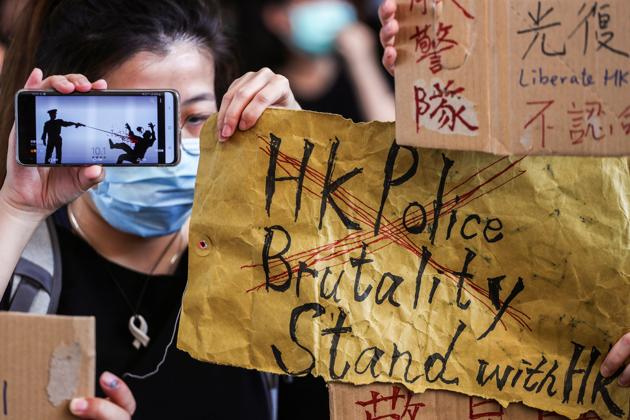China at 70: Beijing projects power. But this has its limits
China’s military capability is impressive. But Hong Kong shows this isn’t enough. There are lessons for India
China’s spectacular celebrations on Tuesday to mark the 70th anniversary of the founding of the Peoples Republic of China (PRC) on October 1, 1949, predictably accorded pride of place to the imposing military parade. Predictable, since Chairman Mao, the architect of modern China, firmly believed that Beijing’s power flowed from the barrel of the gun. His successors have adhered to this tenet in an unwavering manner.

A grand event which showcased the formidable multi-dimensional capabilities of the Peoples Liberation Army (PLA), the parade comprised more than 15,000 military personnel and an inventory that included 160 aircraft and 580 sets of equipment. The distinctive feature of this line-up — reviewed by President Xi Jinping, who is also the Chairman of the Central Military Commission — was that all the armaments/platforms on display were “made in China”. This has a certain relevance for India, among other aspects that can be culled from the military extravaganza at the heart of China at 70.
The highlights of the military display was the pronounced focus on the PLA’s trans-border military capability and the messaging that China was now closing the gap with its major competitor, the United States, in a confident and assured manner. The nuclear capable DF-41 (Dongfeng) was the behemoth on display, an Intercontinental Ballistic Missile with multiple warheads and a range of 12,000 km. This brings China’s on par with the US and Russia in its strategic reach.
Other missiles and platforms unveiled included a hypersonic cruise missile, the DF 17, which has been designed to evade anti-missile systems. This capability can degrade deterrence stability and will trigger regional anxieties, but that may be the intended subtext of the PLA display. A new strategic bomber that can carry air-launched ballistic missiles and supersonic spy drones highlighted different contours of Chinese air power. Artificial intelligence and cyber capabilities were also alluded to.
The unification of Taiwan is a core objective for Beijing and the PLA navy announced the launching of a 40,000 ton amphibious assault ship, which can carry helicopters, a few days before the Tuesday parade. Described as a “vital tool” for the PLA if Taiwan had to be unified by force, the messaging was unambiguous.
Historically, the Chinese ruling elite, which harbours complex and deep-seated insecurities (a la Tiananmen, and now, Hong Kong), has used the public display of military technological prowess to reiterate the primacy of the military in the domestic calculus and to signal national resolve to the external interlocutor.
Thus, on Tuesday, President Xi, in his speech, declared that “No force can shake the status of our great country”, and reiterated his commitment to elevate China to the advanced nation status by 2049 — the centenary of the birth of modern China.
The central element that merits review, and is in contrast to the Indian experience, is the political determination with which Beijing has pursued the acquisition of credible military capability over the last seven decades.
From Mao to Xi, and, particularly after the 1989 Tiananmen democracy protests that were crushed, the Middle Kingdom’s inflexible policy objective has been to ensure compliance by the Chinese citizen in the domestic context, and external interlocutors in the foreign relations domain, through the accretion of hard power.
However, the October 1 celebrations did not go as per the carefully-orchestrated script. Pro-democracy demonstrations in Hong Kong were beamed on global TV even as the military parade began in Beijing. It was a loss of face for President Xi. This was further compounded by the defacing of posters of the Chinese leader in Hong Kong, and points to the limits of the efficacy of military power in dealing with domestic dissent and citizen protests.
Military parades are an indicator of the strategic culture of a nation and India has its own version in the January 26 celebrations. Without in any way suggesting that Delhi ought to emulate Beijing, some elements of the October 1 parade warrant comparison with the Indian experience. China’s visible success in indigenous defence design and production has eluded India, and Prime Minister Narendra Modi’s current focus on “Make in India” is still a work, alas, in wobbly progress.
In contrast to the single-minded political determination in China to create a cost-effective and time-cognisant indigenous industrial ecosystem that could nurture a military production base, the Indian experience has been bleak. Political interest in matters related to military is episodic, and the more recent penchant to make exaggerated claims of military prowess, which is notional, is a case of India “carrying a weak stick but speaking loudly”.
The embarrassing Hong Kong episode that sullied the image of grand splendour and self-assurance that China at 70 wanted to exude pointed to the limits of efficacy of military power in internal security. As the Modi government grapples with the post August 5 Kashmir imbroglio, the subtext of the October 1 parade may be instructive.






